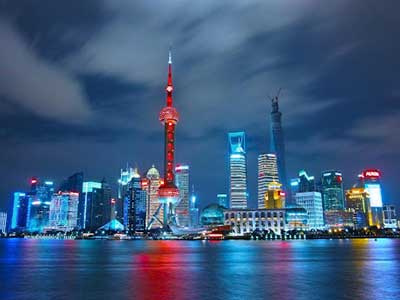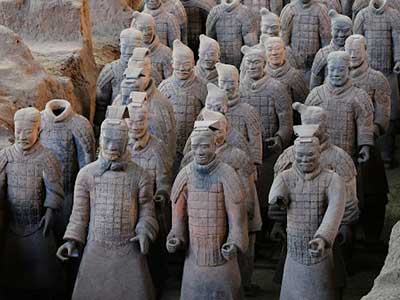 In today’s marketplace, it’s impossible to go anywhere without encountering products that are “Made in China“. From electronics and clothing to furniture and toys, China has solidified itself as the world’s manufacturing powerhouse.
In today’s marketplace, it’s impossible to go anywhere without encountering products that are “Made in China“. From electronics and clothing to furniture and toys, China has solidified itself as the world’s manufacturing powerhouse.
But why are so many products made in China?
There are many reasons that much of the world’s products come from a singular country. These include cost efficiency, infrastructure, workforce availability, and raw resource availability.
Cost Advantage
 One of the main reasons so many products are made in China is their cost efficiency. For decades, China has been able to offer lower labor costs compared to other countries, which makes it attractive to companies aiming to keep production costs down. Lower labor costs are only one part of the equation, though. China has developed an extensive internal network of suppliers, manufacturers, and service providers across nearly every industry, creating a massive economy of scale that reduces production costs even further.
One of the main reasons so many products are made in China is their cost efficiency. For decades, China has been able to offer lower labor costs compared to other countries, which makes it attractive to companies aiming to keep production costs down. Lower labor costs are only one part of the equation, though. China has developed an extensive internal network of suppliers, manufacturers, and service providers across nearly every industry, creating a massive economy of scale that reduces production costs even further.
Consequently, the concentration of manufacturing capabilities allows for vertical integration, where many parts of the supply chain are clustered close to one another. This minimizes transportation costs, reduces delays, and allows companies to scale production without having to turn to outside countries and import several products, as many other countries need to do. This means that parts that require assembly or a variety of parts can rapidly be put together in the most cost effective method.
Infrastructure and Manufacturing Ecosystem
 China has invested significantly in its infrastructure to support manufacturing. They have been working on what is called the “Belt Road Initiative”, which is an international transport system of ports, highways, railways, enabling seamless transportation for their goods around the world.
China has invested significantly in its infrastructure to support manufacturing. They have been working on what is called the “Belt Road Initiative”, which is an international transport system of ports, highways, railways, enabling seamless transportation for their goods around the world.
China has also developed a sophisticated manufacturing ecosystem. The country has specialized manufacturing cities, like Shenzhen for electronics and Guangzhou for textiles, where specific industries can thrive. By centralizing industries to manufacturing hubs, they attract specialized talent and make it easier and faster for companies to bring products to market.
Skilled Labor Force and Workforce Availability
China’s vast population offers a large labor pool that can meet the demands of high-volume manufacturing. Over the years, China has also developed a highly skilled workforce that can handle intricate manufacturing processes, from high-tech electronics to automotive components. This workforce has grown in technical expertise over the decades, often driven by government initiatives that improve education and training in areas related to manufacturing.
Additionally, manufacturers in China have developed impressive flexibility and speed. Chinese factories are known for their ability to scale production quickly and adapt to changing demands, a factor that is especially valuable in industries like consumer electronics, where products often have short life cycles.
Access to Global Markets
 China’s integration into the global economy has also been instrumental in establishing it as a manufacturing hub. With its entry into the World Trade Organization (WTO) in 2001, China gained access to global markets, solidifying its role in international trade. This integration opened up avenues for Chinese manufacturers to supply products worldwide, creating more demand for products made in China and encouraging even more companies to establish manufacturing there.
China’s integration into the global economy has also been instrumental in establishing it as a manufacturing hub. With its entry into the World Trade Organization (WTO) in 2001, China gained access to global markets, solidifying its role in international trade. This integration opened up avenues for Chinese manufacturers to supply products worldwide, creating more demand for products made in China and encouraging even more companies to establish manufacturing there.
Access to Raw Materials
China has an abundance of raw materials in their own country. Some of these are considered an overstock, including many grades of steel. This allows China to keep unit costs lower than many of their competitors. China also has access to rare earth materials making them able to make unique items and also allows them local access increasing speed and lowering costs to manufacture goods.
Innovation and Technology Growth
 In recent years, China has not only focused on manufacturing but also on advancing its technological capabilities. Many factories are now using automation, robotics, and artificial intelligence to increase efficiency and reduce production costs. This shift has allowed China to remain competitive, even as labor costs rise. Factories in China can now handle both high-volume production and high-tech manufacturing, keeping them attractive to companies that need precision manufacturing at scale.
In recent years, China has not only focused on manufacturing but also on advancing its technological capabilities. Many factories are now using automation, robotics, and artificial intelligence to increase efficiency and reduce production costs. This shift has allowed China to remain competitive, even as labor costs rise. Factories in China can now handle both high-volume production and high-tech manufacturing, keeping them attractive to companies that need precision manufacturing at scale.
China’s combination of cost advantages, infrastructure, skilled labor, and government support has solidified its role as the world’s factory. Their extensive experience, advanced supply chains, and manufacturing ecosystem will likely keep it a key player in global manufacturing for the foreseeable future, even with the current tariffs.
At Global Trade Specialists, we have partners in several of China’s manufacturing hubs and access to a wide variety of manufacturing capabilities. Contact us if you’d like to get started with manufacturing or could use some assistance making the transition to scale production.
